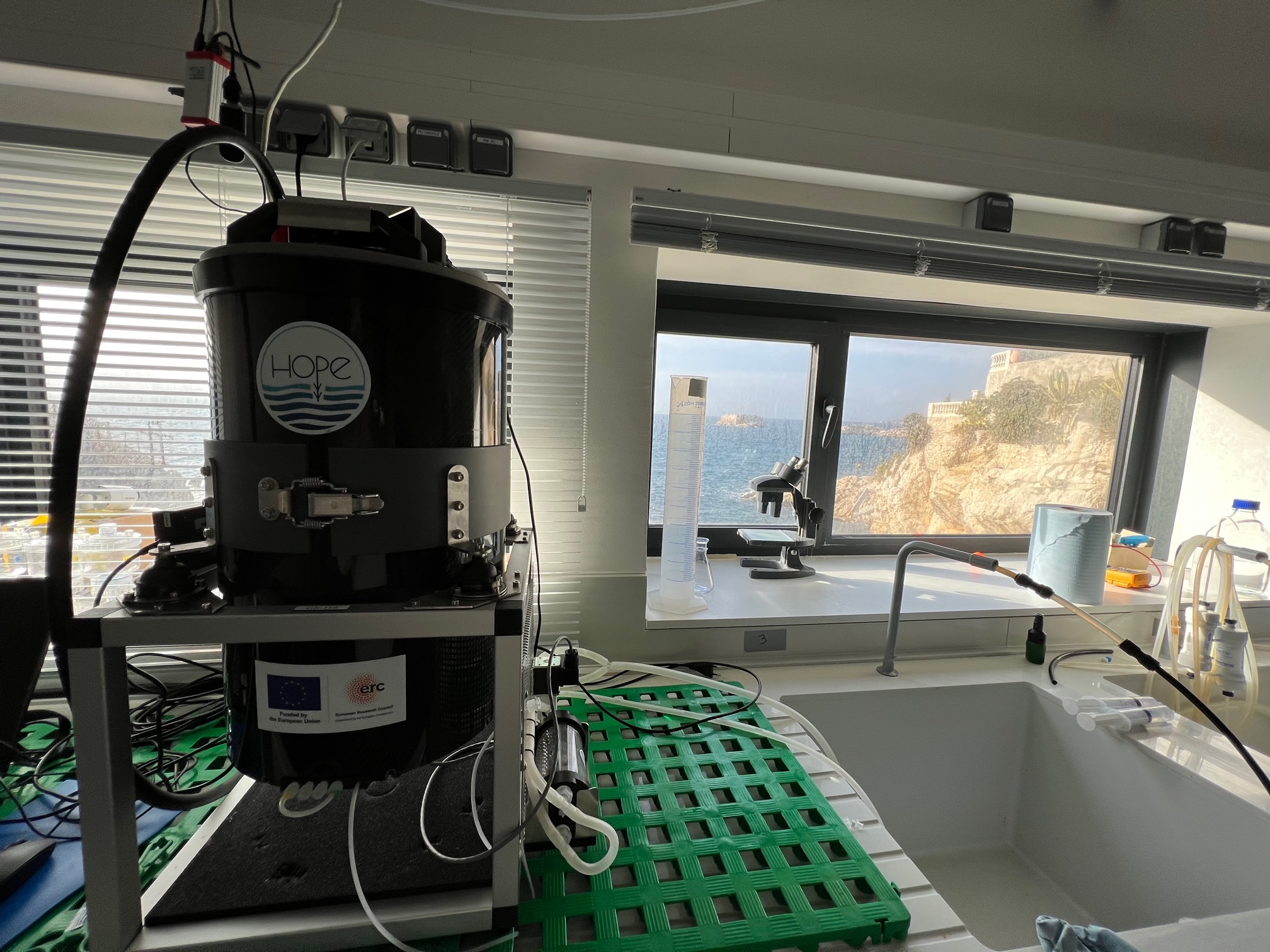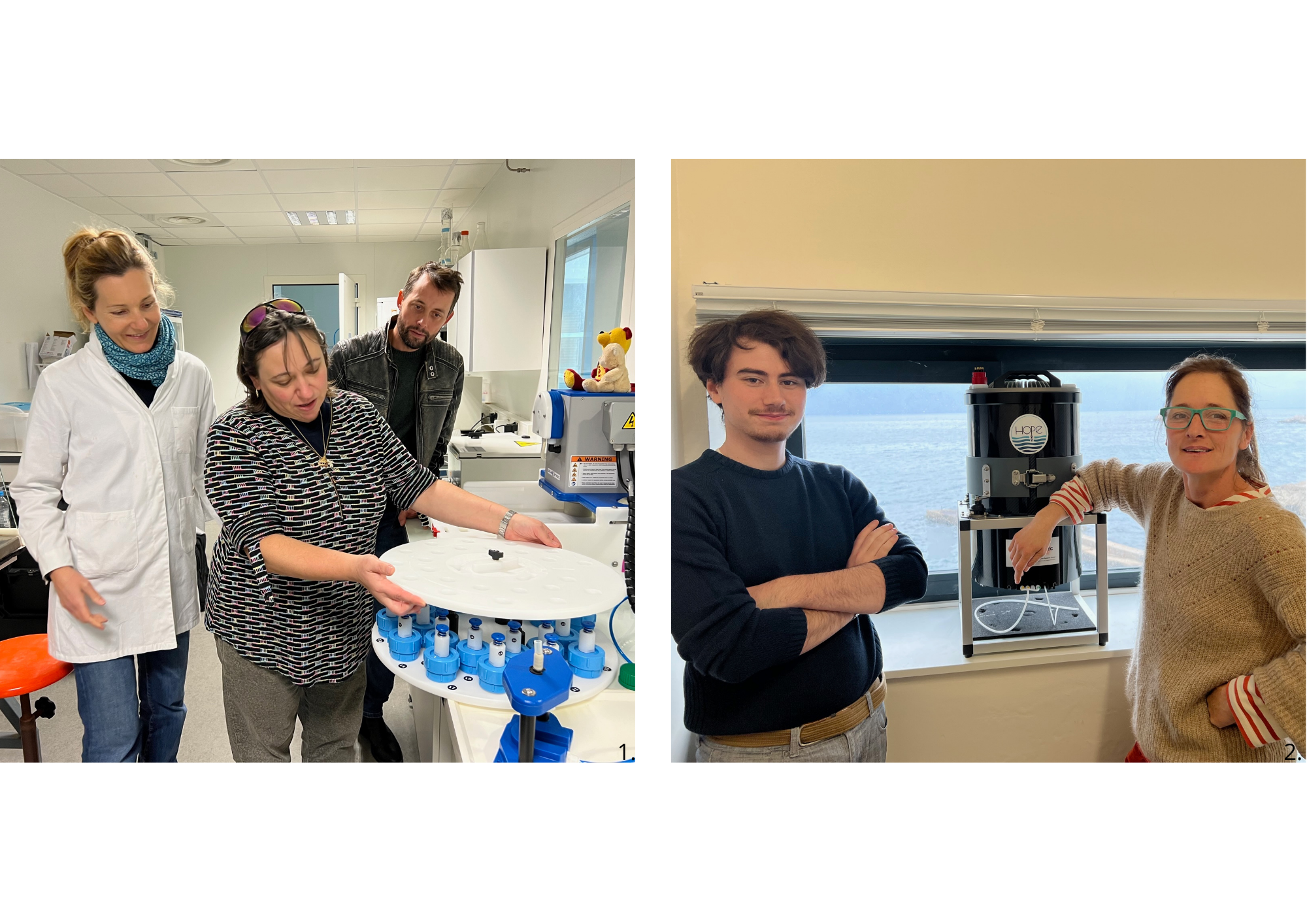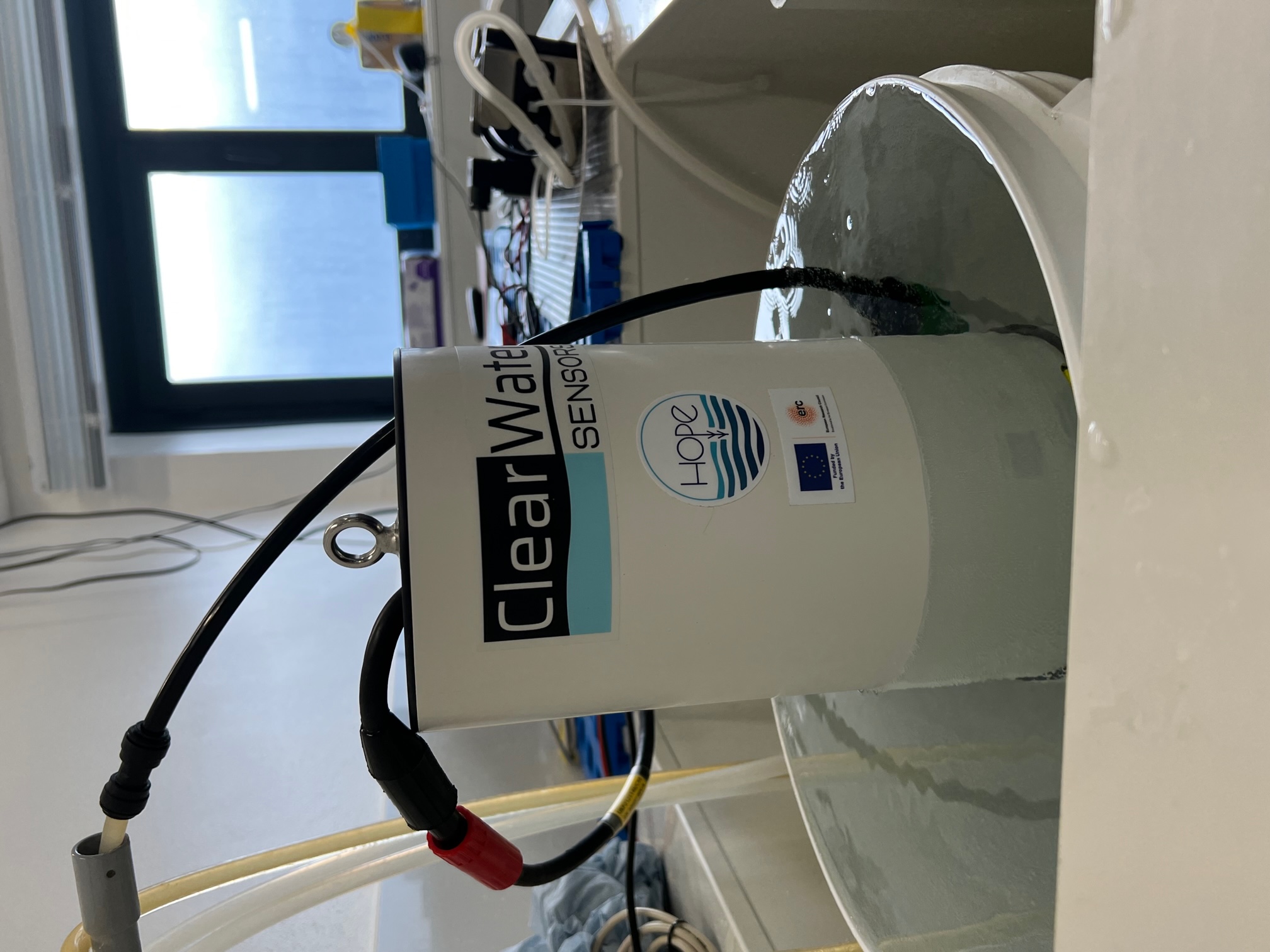The HOPE team mobilized to test the buoy's sensors.

Before the launch of the HOPE buoy and its satellite instrumented lines, scheduled for between March 1 and 10, 2024, the various scientific instruments (sensors and PLCs) have been tested, proven and interfaced by the HOPE team in mainland France. Some of them have been developed for the occasion, or are being assembled together for the first time on a scientific project of this scale.
French version below
The tests took place between Marseille, Villefranche-sur-mer and Agen. At the Institut Méditérranéen de l'Océanologie (MIO) in Marseille, Sophie Bonnet and Mercedes Camps carried out the first tests on the brand-new Autosampler, named FIFI (FIltration-FIxation). This automatic sampler, developed for HOPE, will autonomously collect and store DNA and RNA from marine organisms, requiring intervention only once a month.
Matthieu Savarino, Melilotus Thyssen, Clémentine Gallot, Mercedes Camps and Sophie Bonnet tested the Submersible Cytometer at the Sea Waters Sensing Laboratory @MIO Marseille (SSLA@MM), to develop protocols for targeting diazotrophs, a first in marine microbiology. This laser-equipped instrument will quantify the major groups of the phytoplankton community according to their size, shape and optical properties (fluorescence). It will be attached to the HOPE profiling buoy to determine the composition of the surface community, which will also be scanned at depth by the instrumented lines to determine which species contribute to carbon storage.
SSLA@MM also tested new chemical sensors for the determination of nutrients in seawater... particularly sensitive sensors adapted to tropical waters, HOPE's main target...
At the Villefranche marine station, Jean-Michel Grisoni and Jordan Duchene (instrumentation engineers) tested the UVP (Underwater Vision Profiler) sensors and the CTD (Conductivity Temperature Depth) bathysonde which will be installed on a cage that will carry out profiles every 4 hours in the ocean. They will respectively provide images of suspended particles and their automated identification according to size, and characterize the ocean water column in terms of physical and chemical properties along the water column.
Finally, these sensors were assembled and interfaced to the buoy at the Mobilis factory in Agen (builder of the HOPE buoy), so that they can transmit their data back to the buoy before being sent ashore, where they can be consulted by HOPE scientists in real time on servers.... an oceanographer's dream... When everything's working properly, we'll open the champagne!


French version
Avant la mise à l’eau de la bouée HOPE et de ses lignes instrumentées satellites prévue entre le 1er et le 10 mars 2024, les différents instruments scientifiques (capteurs et automates) ont été testés, éprouvés et interfacés par l’équipe HOPE en France métropolitaine. Certains d’entre eux ont été développés pour l’occasion, ou sont assemblés entre eux pour la première fois sur un projet scientifique de telle envergure.
C’est entre Marseille, Villefranche-sur-mer et Agen que se sont déroulés les tests. À l’Institut Méditérranéen de l’Océanologie (MIO), à Marseille, Sophie Bonnet et Mercedes Camps ont réalisé les premiers tests sur le tout nouveau Autosampler, nommé FIFI (FIltration-FIxation). Cet automate développé pour HOPE, permettra de prélever et de conserver l’ADN et de l’ARN des organismes marins de façon autonome, ne nécessitant une intervention qu'une fois par mois.
C’est au Sea Waters Sensing Laboratory @MIO Marseille (SSLA@MM) que Matthieu Savarino, Melilotus Thyssen, Clémentine Gallot, Mercedes Camps et Sophie Bonnet ont testé le le Cytomètre immergeable, pour développer des protocoles permettant de cibler tout particulièrement les ‘diazotrophes’, une première en microbiologie marine. Cet instrument muni de lasers va permettre de quantifier les grands groupes de la communauté phytoplanctonique en fonction de leur taille, de leur forme et de leurs propriétés optiques (fluorescence). Il sera fixé sur la bouée profileuse HOPE pour déterminer la composition de la communauté en surface, laquelle sera également scrutée en profondeur par les lignes instrumentées pour déterminer quelles espèces contribuent au stockage de carbone.
C’est également au SSLA@MM qu’ont été testés les nouveaux capteurs chimiques pour la détermination des éléments nutritifs dans l’eau de mer… des capteurs particulièrement sensibles adaptés aux eaux tropicale, toute la cible de HOPE…
À la station marine de Villefranche, Jean-Michel Grisoni et Jordan Duchene (ingénieurs en instrumentation) ont testé les capteurs UVP (Underwater Vision Profiler) et la bathysonde CTD (Conductivity Temperature Depth) qui seront installés sur une cage qui effectuera des profils toutes les 4h dans l’océan. Ils permettent respectivement d’obtenir des images des particules en suspension ainsi que leur identification automatisée en fonction de leur taille et de caractériser la colonne d’eau océanique en terme de propriétés physiques et chimiques le long de la colonne d’eau.
Enfin, c’est à Agen à l’usine Mobilis (constructeur de la bouée HOPE) qu'ont été assemblés et interfacés ces capteurs sur la bouée, afin qu’il retransmettent leur données à la bouée avant d'être envoyées à terre et consultables par les scientifiques de HOPE en temps réel sur des serveurs…. un rêve d’océanographe… quand tout fonctionnera correctement, on ouvrira le champagne!